"Cherishing Little Steps - A Haven for Baby and Family Journeys"
Baby Shoes Learning to Walk
Are you ready to take your baby’s first steps?
As little ones embark on their journey of learning to walk, it is crucial to provide them with the right footwear. In this article, we will explore the importance of proper baby shoes, when to start using them, and how to choose the perfect fit.
With a focus on support, stability, materials, and style, we aim to serve you with expert advice on nurturing your baby’s walking development.
Key Takeaways
- Proper footwear is crucial for ensuring the healthy development and stability of a baby’s growing feet.
- Walking barefoot allows for natural foot muscle development, improves balance and coordination, and promotes healthier foot development.
- Use a fitting guide to determine the correct shoe size for your baby, considering both length and width measurements.
- Regularly evaluate the support and stability features of baby shoes to promote proper foot development and prevent foot problems.
The Importance of Proper Footwear

Undoubtedly, the importance of proper footwear cannot be overstated when it comes to ensuring the healthy development and stability of a baby’s growing feet. As babies begin to learn to walk, their feet are still in the early stages of development, and providing them with the right support is crucial.
One key aspect of proper footwear for babies is the inclusion of arch support. The arch of the foot plays a vital role in maintaining balance and absorbing shock while walking. By incorporating arch support in baby shoes, we can promote proper alignment and prevent common foot problems that may arise in the future.
Another essential feature to consider when choosing baby shoes is the flexibility of the sole. Babies’ feet are naturally pliable and need freedom of movement to strengthen their muscles and develop proper walking patterns. Shoes with flexible soles allow the feet to move naturally and encourage a more natural gait. This flexibility also aids in the development of balance and coordination, enabling babies to explore their environment with confidence.
When to Start Using Baby Shoes
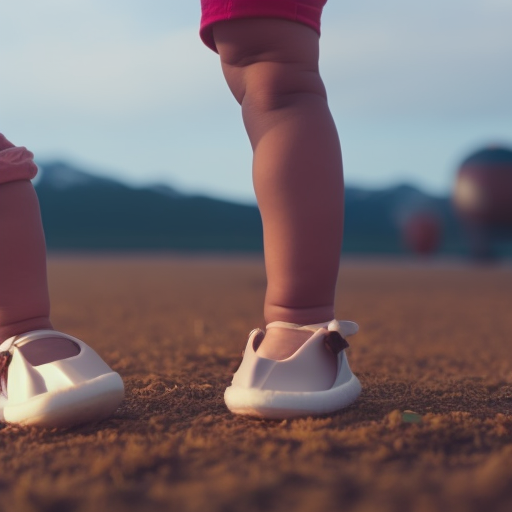
Parents often wonder when is the appropriate time to introduce baby shoes, and it is important to consider the development of their motor skills and the stage of walking readiness. While baby shoes are commonly used to protect a child’s feet, there are alternative options that can be considered.
One alternative is allowing babies to walk barefoot. Walking barefoot allows for the natural development of the foot muscles and helps improve balance and coordination. When babies are learning to walk, it is essential for them to have a solid foundation and freedom of movement. Baby shoes can sometimes hinder this process by restricting the natural movement of the foot.
When babies walk barefoot, they are able to grip the ground with their toes, which strengthens their foot muscles and promotes proper alignment. This can ultimately lead to healthier foot development. In addition to the physical benefits, there are other advantages to allowing babies to walk barefoot. It helps them to better understand the terrain they are walking on, as they can feel the different textures and surfaces. This sensory feedback is crucial for their overall development.
While baby shoes can be cute and stylish, it is important to prioritize the developmental needs of the child. It is recommended to consult with a pediatrician or a podiatrist to determine when it is appropriate to introduce baby shoes and to discuss alternative options such as walking barefoot.
Choosing the Right Size
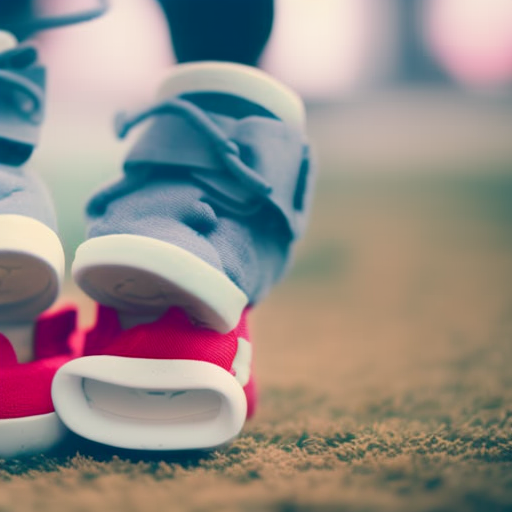
Taking into consideration the developmental needs of a child’s feet, selecting the appropriate size of baby shoes is crucial for ensuring proper foot growth and allowing for unrestricted movement. The right pair of shoes can provide support and protection while promoting healthy foot development.
Here are some key points to consider when choosing the right size of baby shoes:
-
Fitting Guide: Use a fitting guide to determine the correct shoe size for your baby. These guides usually provide a foot measurement chart that correlates foot length with the corresponding shoe size. It is important to measure both the length and width of your baby’s feet to ensure a proper fit.
-
Measuring Techniques: There are various measuring techniques that can be used to determine your baby’s shoe size. The most common method is to measure the length of the foot from heel to toe. Another technique is to trace the outline of your baby’s foot on a piece of paper and measure the length and width from the tracing.
-
Room for Growth: Babies grow rapidly, so it is important to leave some room for growth when selecting baby shoes. A thumb’s width of space between the longest toe and the end of the shoe is recommended to allow for natural foot movement and growth.
Support and Stability Features

Regularly evaluating the support and stability features of baby shoes is essential to promote proper foot development and prevent potential foot problems. As babies begin to take their first steps and explore the world around them, it is important to provide them with footwear that supports their growing feet and aids in their developmental milestones.
Orthopedic benefits are crucial when considering the design and features of baby shoes. The right pair of shoes can provide proper arch support, cushioning, and stability, which are essential for healthy foot development. It is important to choose shoes that are flexible, allowing natural movement of the feet, while also providing enough structure to support the growing bones and muscles.
To emphasize the importance of support and stability features, let’s take a look at the following table:
| Support Feature | Stability Feature | Emotional Response |
|---|---|---|
| Arch Support | Non-slip soles | Confidence |
| Cushioned Insole | Ankle support | Comfort |
| Breathable Upper | Wide toe box | Freedom of movement |
Materials and Breathability
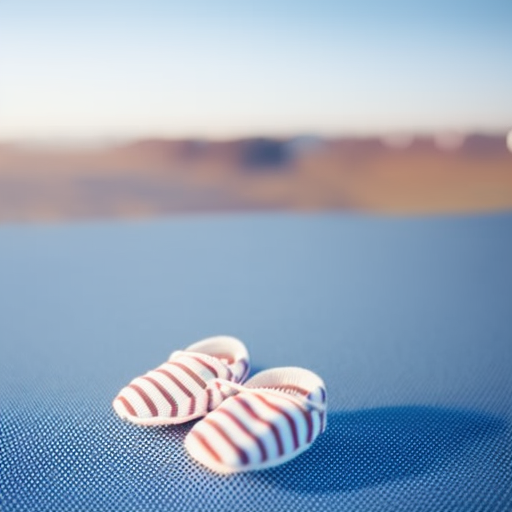
Breathability and the choice of materials play a crucial role in determining the comfort and overall foot health of babies when selecting the right pair of shoes. It is essential to prioritize comfort and flexibility to ensure that the shoes do not restrict the natural movement of the baby’s feet. Additionally, durability and long-lasting qualities are important factors to consider, as babies tend to be active and their shoes should be able to withstand wear and tear.
When it comes to materials for baby shoes, there are several options available in the market. Here are three important considerations:
-
Natural materials: Opting for shoes made from natural materials such as leather or cotton can provide breathability and allow air circulation, preventing excessive sweating and discomfort for the baby.
-
Lightweight and flexible soles: Shoes with lightweight and flexible soles allow for unrestricted movement and mimic barefoot walking, promoting healthy foot development.
-
Adjustable closures: Shoes with adjustable closures, such as Velcro straps or laces, provide a secure fit and allow for easy adjustments as the baby’s feet grow.
Easy to Put On and Take Off
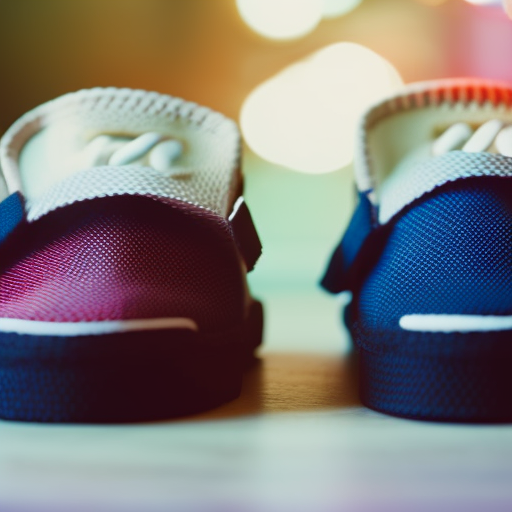
Ensuring that baby shoes have user-friendly closures, such as Velcro straps or easy-to-tie laces, allows for effortless putting on and taking off, enabling parents to conveniently dress their little ones. Comfort and fit, durability, and longevity are key factors to consider when it comes to baby shoes.
Comfort and fit are crucial for babies who are learning to walk. The shoes should provide enough room for their developing feet to move and grow. Soft and flexible materials, combined with adjustable closures, ensure a snug yet comfortable fit. This allows babies to explore their surroundings with ease and without any discomfort.
Durability is another important aspect to consider. Babies are constantly on the move, exploring and learning to walk. The shoes must be able to withstand their active lifestyle. High-quality materials and construction techniques ensure that the shoes can endure wear and tear, providing long-lasting support for little ones.
Longevity is also a factor to keep in mind. Babies grow quickly, and their shoe size can change in a matter of months. Investing in shoes that can accommodate growth, such as those with adjustable closures or roomy toe boxes, can extend the lifespan of the shoes and save money in the long run.
Style and Fashion Considerations

When choosing baby shoes, parents should also take into account the style and fashion considerations, ensuring that their little ones are both comfortable and stylish. Baby shoe trends have evolved over the years, with more emphasis on design and aesthetics. Now, parents can find a wide variety of trendy baby shoes that not only protect their little one’s feet but also enhance their overall outfit.
Here are three important factors to consider when incorporating baby shoes into outfits:
-
Comfort: While style is important, it should never compromise the comfort of the baby. Look for shoes made from soft, breathable materials with cushioned insoles and flexible soles to support natural foot movement.
-
Durability: Babies are active, and their shoes should be able to withstand their adventures. Opt for well-made shoes with sturdy construction and reinforced stitching to ensure they can handle crawling, walking, and playing.
-
Versatility: Choose shoes that can be easily paired with different outfits. Neutral colors like white, gray, or beige are great options as they can be matched with various clothing styles and colors.
Incorporating baby shoes into outfits can be a fun and creative way to express your child’s style while keeping them comfortable. With the right balance of fashion and functionality, you can ensure that your little one is both stylish and content.
Caring for Baby Shoes
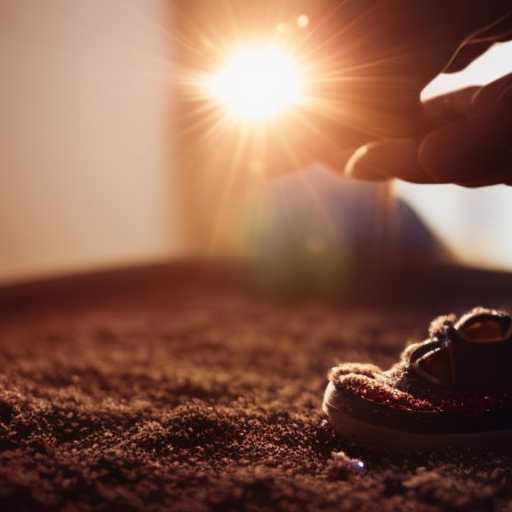
Properly maintaining baby shoes is essential to prolong their lifespan and preserve their quality. As babies grow and explore, their shoes inevitably get dirty and need to be cleaned. To clean baby shoes, start by removing any loose dirt or debris. Gently wipe the shoes with a damp cloth or sponge, using mild soap if necessary. Avoid using harsh chemicals or submerging the shoes in water, as this can damage the materials. After cleaning, allow the shoes to air dry completely before storing them.
Storing baby shoes correctly is also important to keep them in good condition. It is recommended to store them in a cool, dry place away from direct sunlight. Avoid placing heavy objects on top of the shoes, as this can cause them to lose their shape. If possible, store the shoes in their original box or in a shoe organizer to protect them from dust and potential damage.
Regular cleaning and proper storage not only help maintain the appearance of baby shoes, but also extend their lifespan. By taking care of these small but important steps, parents can ensure that their baby’s shoes remain in good condition, ready for the next adventure.
Transitioning to Walking Barefoot
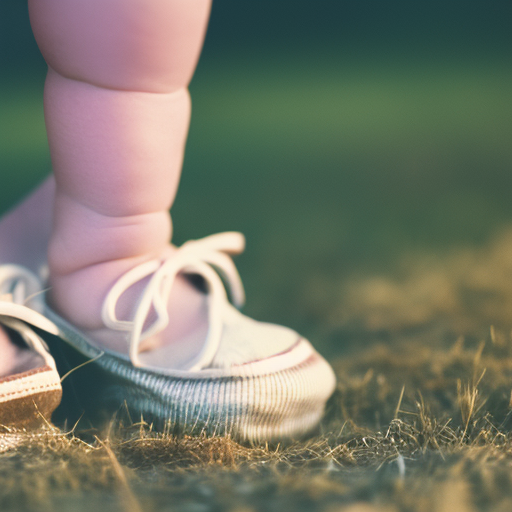
Parents can consider gradually introducing their children to walking barefoot, allowing them to develop their balance and strengthen their foot muscles. Transitioning from shoes to barefoot can be beneficial for young children as it promotes natural foot development and enhances sensory perception. Here are three key benefits of walking barefoot:
-
Muscle development: Walking barefoot allows the foot muscles to work harder as they grip and flex with each step. This helps strengthen the arches, toes, and ankles, promoting better balance and stability in the long run.
-
Sensory stimulation: The soles of our feet are filled with sensory receptors that provide feedback to the brain about the terrain we are walking on. Walking barefoot helps children develop a better sense of proprioception and spatial awareness, allowing them to navigate their environment more effectively.
-
Natural gait pattern: Shoes can alter the natural gait pattern by providing support and cushioning. Walking barefoot encourages a more natural stride, promoting proper alignment of the feet, knees, and hips. This can help prevent common foot problems such as flat feet and toe deformities.
When transitioning to barefoot walking, it is important to take it slowly and gradually increase the amount of time spent barefoot. Start indoors on a safe, clean surface and then progress to outdoor environments. Always ensure the child’s safety by avoiding sharp objects or extreme temperatures. Walking barefoot can be a valuable part of a child’s development, allowing them to connect with the ground and experience the world through their feet.
Tips for Encouraging Walking Development
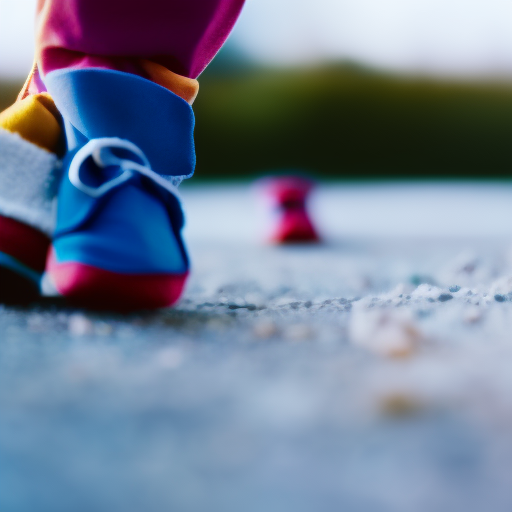
One effective way to encourage walking development is by providing children with opportunities to explore their surroundings independently. As children reach various walking milestones, it is important to create a safe environment that allows them to practice their newfound skills. Encouraging independent steps can be achieved by removing obstacles, providing stable furniture or objects for support, and giving them the freedom to explore their surroundings.
Walking milestones are an important part of a child’s physical development. Typically, infants begin by pulling themselves up and cruising along furniture. This stage is followed by taking a few steps while holding onto objects for support. Eventually, they gain the confidence to take independent steps, leading to walking without any assistance.
To encourage independent steps, parents and caregivers can create a safe space for the child to explore. This can be achieved by removing any hazards that may hinder their progress. It is also helpful to provide stable furniture or objects for support, such as low chairs or push toys. These aids can give children the confidence to take their first steps without fear of falling.
In addition to providing a safe environment, it is important to give children the freedom to explore their surroundings. Allowing them to move freely and discover new things will stimulate their curiosity and motivation to walk independently.
Frequently Asked Questions
Can Baby Shoes Hinder the Natural Development of a Baby’s Feet?
Baby shoes can potentially hinder the natural development of a baby’s feet. It is important for babies to have barefoot time as it allows for proper muscle development and sensory feedback, promoting healthy foot development.
How Often Should I Check the Size of My Baby’s Shoes?
Regularly checking the size of your baby’s shoes is crucial for ensuring proper fit. As babies’ feet grow rapidly, ill-fitting shoes can hinder their development and cause discomfort. Regular checks help maintain the importance of proper shoe fit for their healthy foot development.
Are There Any Specific Features in Baby Shoes That Promote Proper Foot Development?
Proper foot support in baby shoes is essential for promoting healthy foot development. Flexible soles are beneficial as they allow natural movement and help strengthen muscles. These features ensure optimal foot development in babies.
How Long Should I Keep My Baby in Soft-Soled Shoes?
It is recommended to keep babies in soft-soled shoes until they start walking consistently outdoors. This allows their feet to develop naturally and strengthens the muscles. However, barefoot walking is still beneficial for a certain period.
Are There Any Specific Materials That Are More Breathable and Comfortable for Baby Shoes?
Breathable materials and a comfortable fit are crucial factors to consider when choosing baby shoes. These features ensure proper ventilation and support for delicate feet, promoting healthy foot development and overall comfort for the child.
Conclusion
In conclusion, choosing the right baby shoes is crucial for supporting and stabilizing their developing feet. Proper footwear should be selected based on size, materials, breathability, and style considerations.
Caring for baby shoes is essential to maintain their quality and durability. However, it is also important to allow babies to experience walking barefoot as it aids in their walking development.
By following these tips and providing the right shoes, parents can ensure their babies have a comfortable and enjoyable learning to walk experience.


